Art Fairs
Where Does Art Stand Today? Here Are a Few Critical Impressions Gleaned at the Frieze New York Art Fair
Takeaways from a frenzied week of art fairs. Plus, "That '70s Show!"
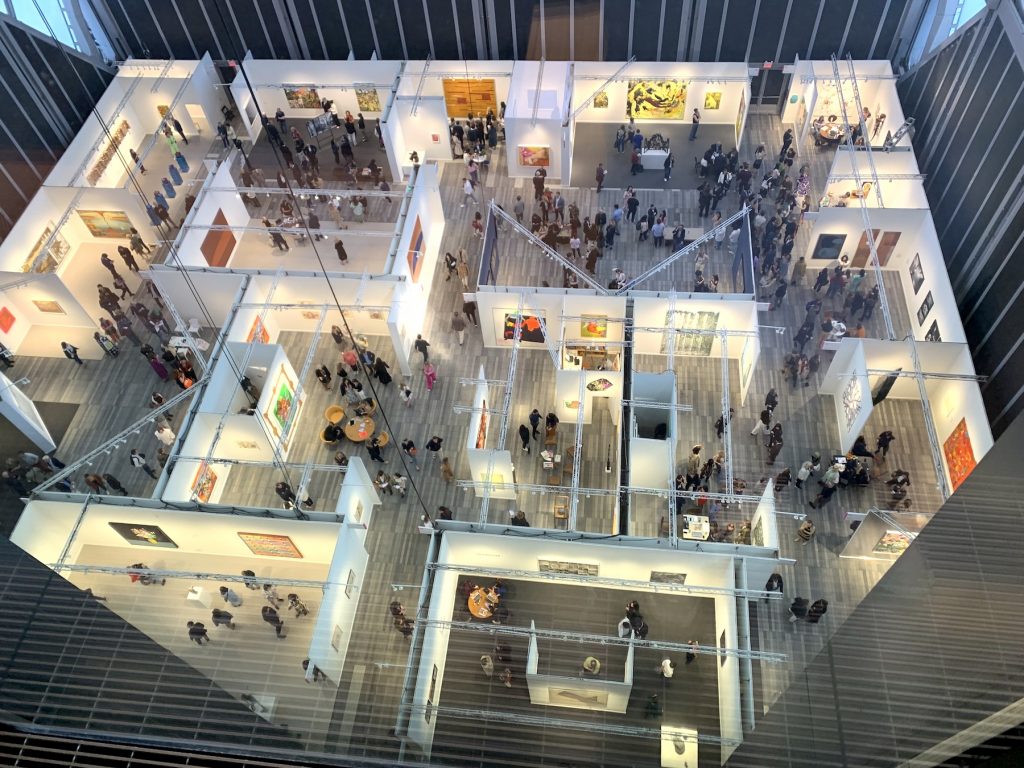
Takeaways from a frenzied week of art fairs. Plus, "That '70s Show!"

Ben Davis

I used to be OK at writing about art fairs. Shoot, an article I wrote about the first edition of Frieze New York is excerpted in a book on how to write about art. But I haven’t been to Frieze, or any art fair really, since it was still in a giant white tent on Randall’s Island.
The thing is, tent-based or not, art fairs are discourse killers. They have the same problem that social media apps have, now that they are all descending into scrolling short-form video: Everything feels the same, and even the best individual bits of content feel transient because the medium encourages snacking on images and moving on.
But talking about how boring and baleful art fairs gets boring too. If you’re in the business of art, Frieze New York sets trends. If you’re just an observer, you can use it to get a sense of what the contemporary end of classy cosmopolitan taste in art looks like now—or what dealers and artists are betting it looks like, at any rate.
That’s what I went in trying to drag out of the experience this year. And so, back to Frieze I went to see what was up in its current Hudson Yards location in the Shed.
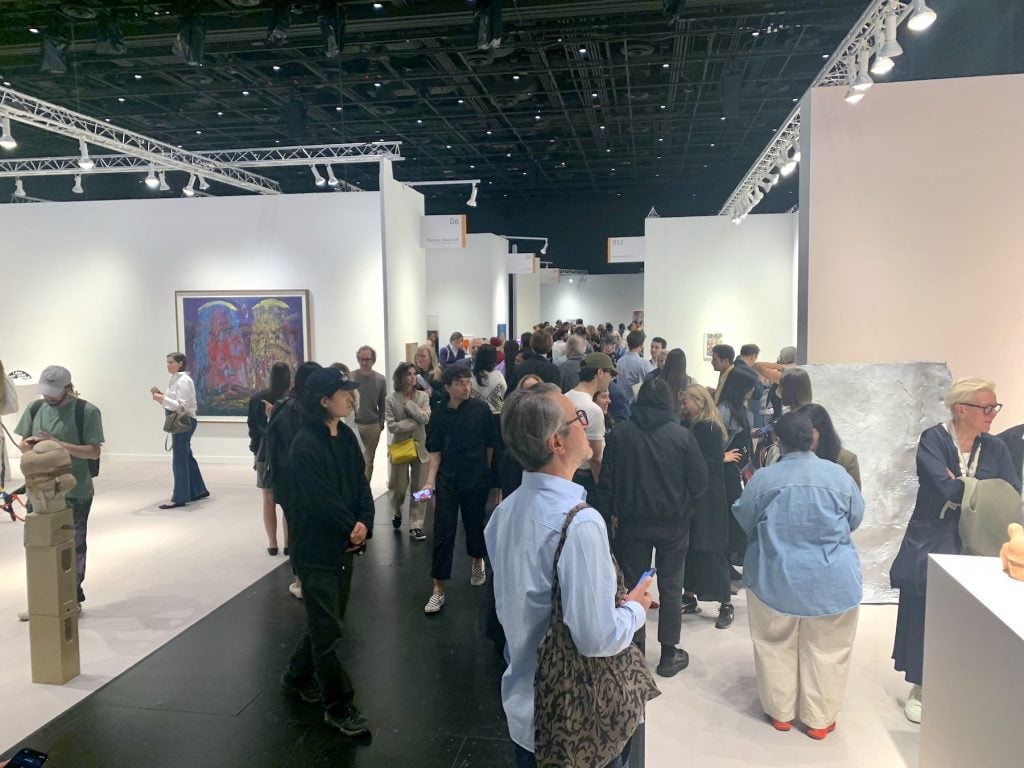
Frieze New York on its opening day at the Shed. Photo by Ben Davis.
Having been away from the fairs and come back, it is surprising how little different they feel. Strangely, they are very frenetic and overstimulating events, while also seeming to represent a branch of culture that evolves at a particularly recalcitrant and leisurely pace. In many, many ways, the meta of this particular game seems to be trying to select art that conveys a sense of nowness and relevance—without making anyone think too directly about everything that is most alarming about the present.
That’s a way to read what was going on in perhaps the best single booth in the fair, the much-discussed “1973” project at Michael Rosenfeld gallery. It featured a selection of women artists, all coming from 1973, the year of the Supreme Court’s Roe v. Wade decision. The booth offered hit after hit, in the form of intimate, impactful sculptural works and assemblages, from figures I don’t know enough about, such as Nancy Grossman and Lenore Tawney.
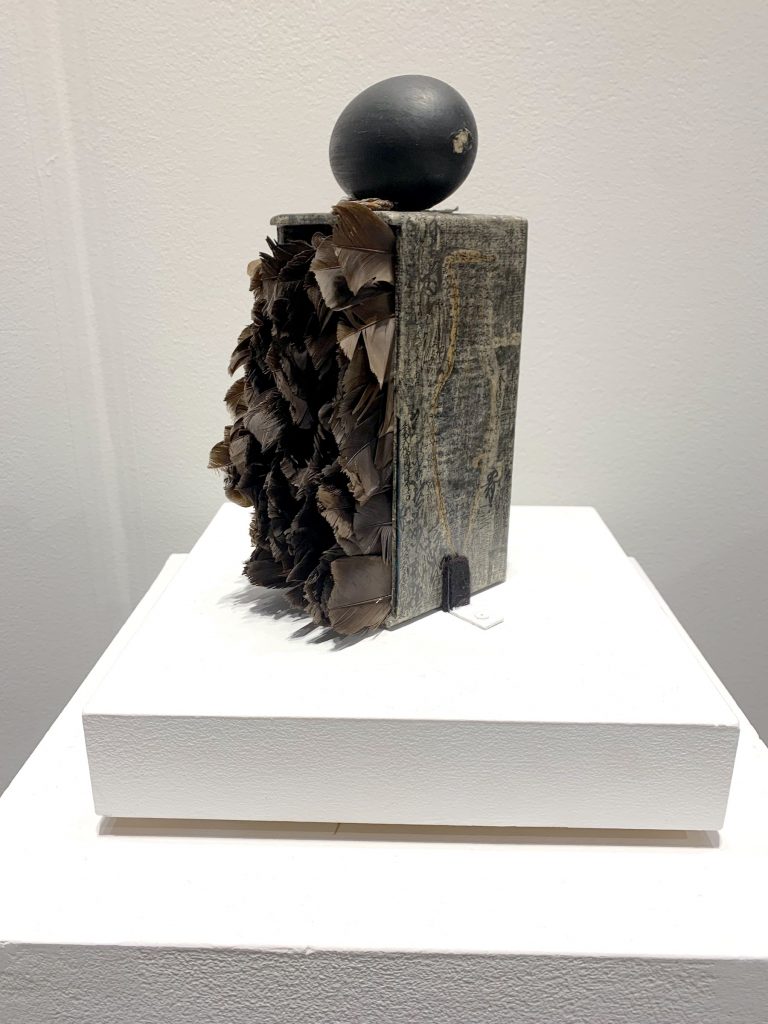
Lenore Tawney, Dark Music (1972-74). Photo by Ben Davis.
For an art fair, this is a really memorable display. As for the newsworthy reference to the Roe anniversary, well, it felt more like a possible conversation prompt than a statement about the history and present of women’s rights in the United States. The presentation has such a light touch with topical anxieties that it feels as if it may actually be holding them at a distance.
Another thing I thought while at Frieze 2023: In a time of such alarming tech disruption, it feels extra-notable how traditional things felt, media-wise (a feeling that Richard Whiddington also had at NADA). Selling new-media art is a daring proposition at the best of times, of course—but the near invisibility of references to present-day tech at this event may be seen as art playing it safe in the face of economic jitters, or stressing its most tried-and-true, embodied pleasures against the specter of all-destroying A.I.
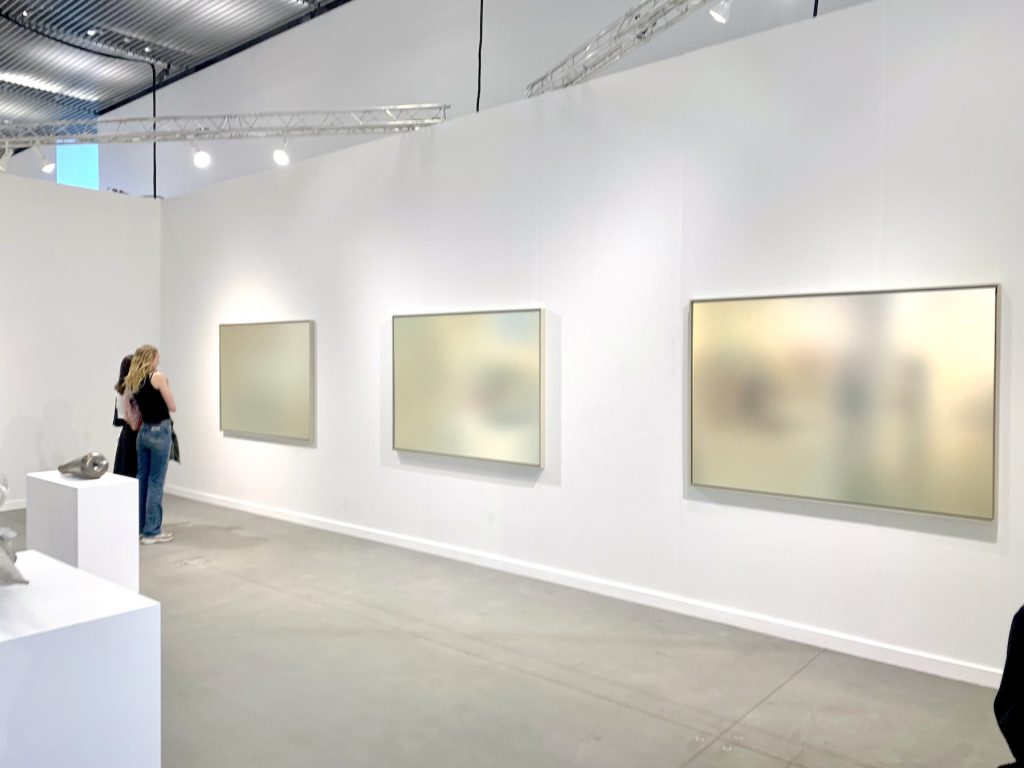
Works by Scott Lyall at Miguel Abreu. Photo by Ben Davis.
Scott Lyall’s smoky, sleek mirror-painting-objects at Miguel Abreu had a brainy, technical quality. At Esther Schipper, Rosa Barba offered a grabby, minimal version of kinetic art-as-painting. And Haegue Yang’s bell-bedecked tondos at Dépendance, which were mounted on the wall in such a way that guests could touch them to make them jangle and change positions, had a fun interactive quality.
But, obviously, these are all the most comfortingly analogue versions of non-traditional media you could imagine.
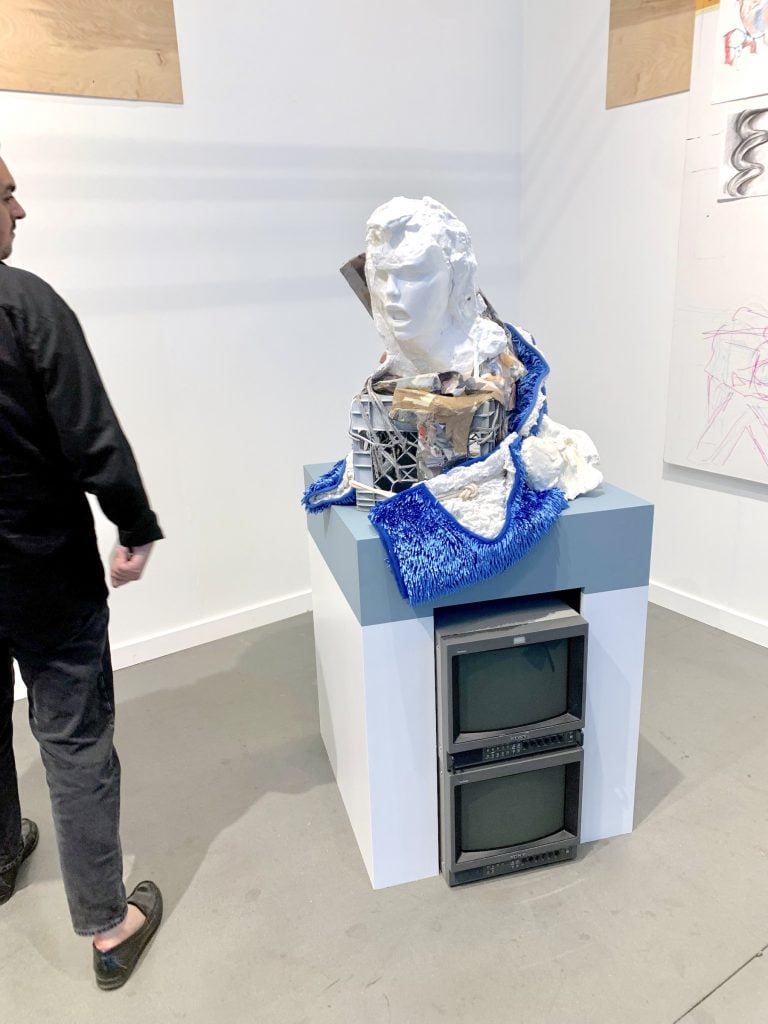
Danica Barboza, A World of Things That Say Exactly What They Are (2023) at LOMEX. Photo by Ben Davis.
If direct engagement with contemporary technology wasn’t super visible, however, contemporary unease about the body being corrupted and broken by the strains of contemporary life burbled here and there in the stands—particularly among the sculptors, for whatever reason.
This is the case with Josh Kline’s sculpture featuring limbs discarded in a Walmart shopping cart at Modern Art; with Danica Barboza’s uneasy assemblages at Lomex; with Mire Lee’s abstracted sculpture-creature at Tina Kim, whose medium was listed as “soft tentacles inside concrete structure.”
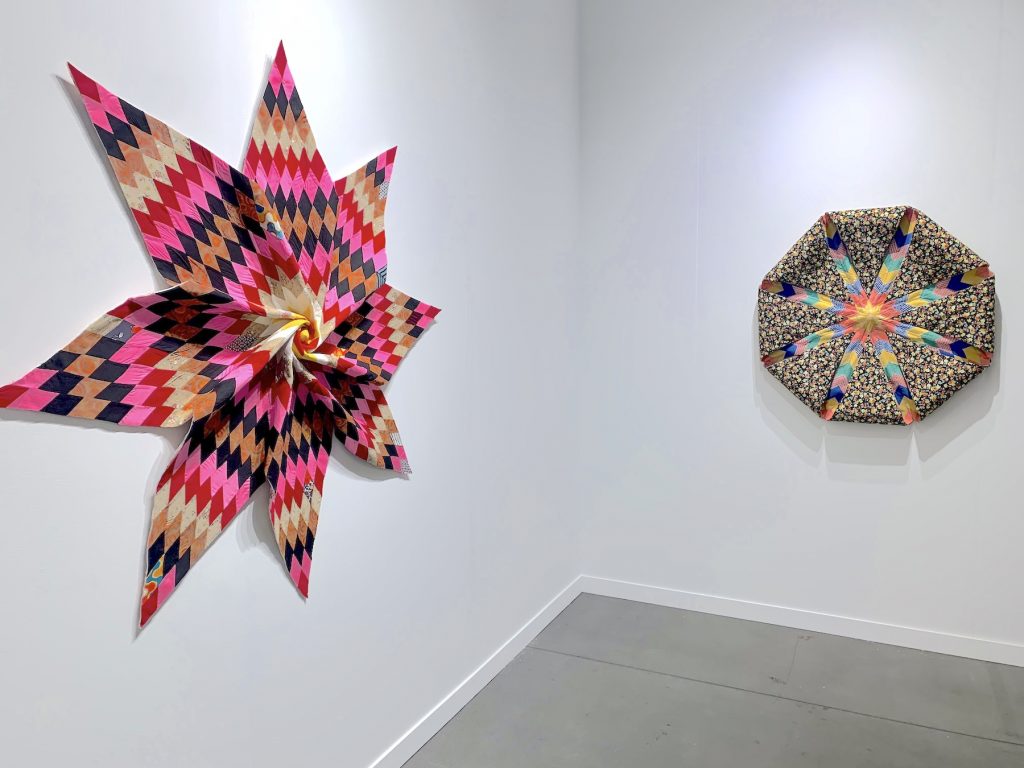
Sanford Biggers, Fire Flower (2023) and Boogie Down (BX Boogie Woogie) (2023). Photo by Ben Davis.
Another thread running through Frieze might connect to the same contemporary unease, though as an antidote rather than a direct reflection of it: the invocation of traditional craft as repository of a healing (symbolic) connection to community and memory.
Along this axis, you might put Sanford Biggers’s reworked quilts at Massimo de Carlo; Carlos Villa’s feathered capes at Silverlens; Maria Nepomuceno’s globular and densely colored wall-pieces made from braided rope and straw at Victoria Miro; and quite a few more.
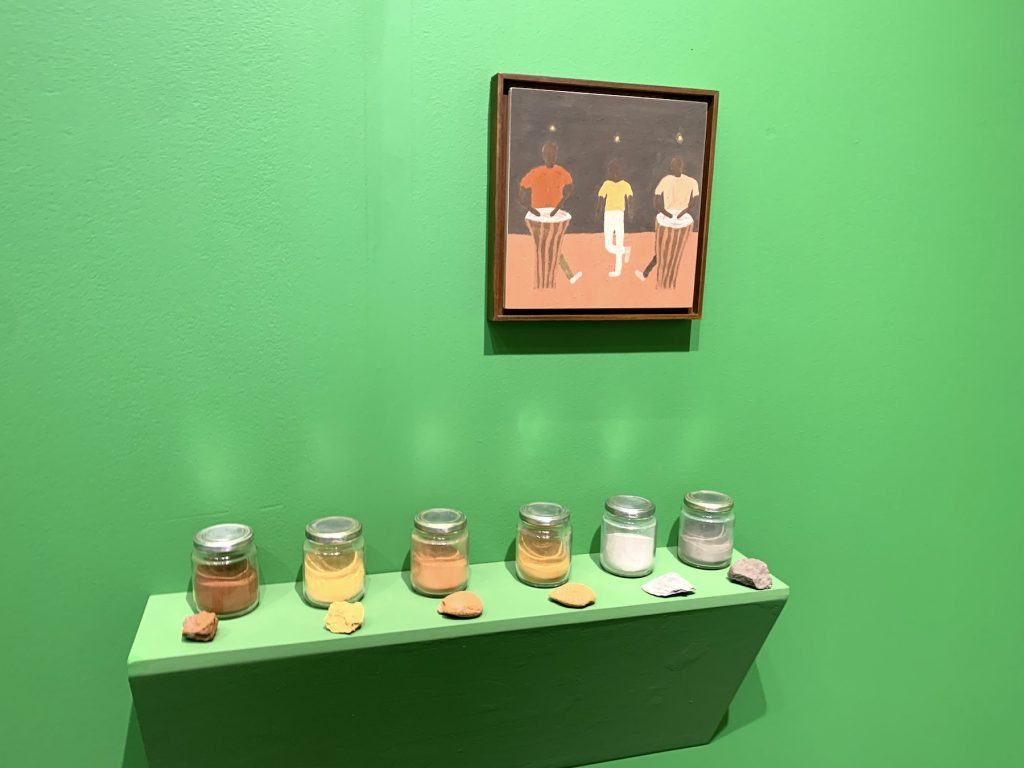
Marcos Siqueira at Mitre Gallery. Photo by Ben Davis.
An even more emphatic version of this same reaction might be works that evoke a literal connection with the earth and more communal ways of living.
On that wavelength, there were Marcos Siqueira’s paintings at Mitre Gallery, elemental compositions of scenes from the small community the artist lives in in Brazil, painted using pigments literally made from the earth of that area. And a highlight of Frieze New York this year was at Proyectos Ultraviolet, where Edgar Calal, who hails from an indigenous community in Guatemala, presented a suite of paintings made by his own family, dipped in mud meant to slowly flake away to reveal the compositions underneath.
Here is yet another, more sensitive thing I asked myself at Frieze 2023: Are we in a “post-Black Lives Matter in the art world?” A questioner asserted as much after a panel I was on at the NADA art fair on Saturday, and I understand the anxiety. Yet it does not seem to be the case—at least not if Frieze New York represents the interests of the big spenders and what the tastemakers are championing.
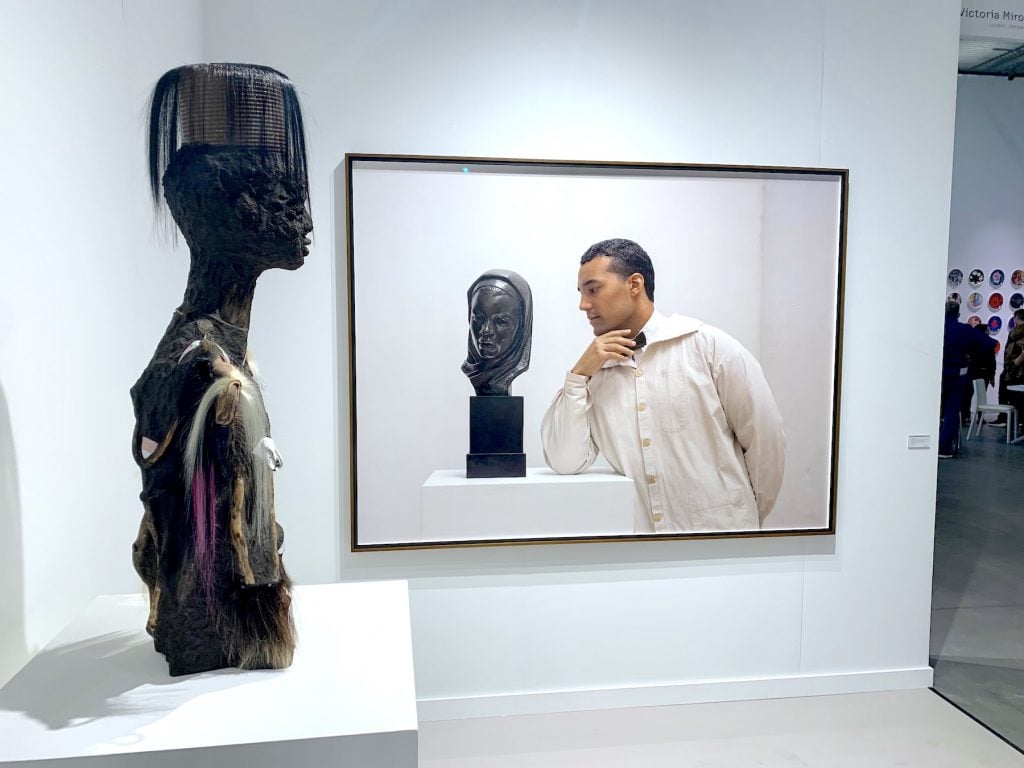
Wangechi Mutu, Grow the Tea, then Break the Cups (2021) and Isaac Julien, Black Madonna / New Negro Aesthetic (Once Again… Statues Never Die) (2022). Photo by Ben Davis.
The major dealers were prominently front-loading historically important Black artists: an entire booth of Jack Whitten at Hauser & Wirth; Mary Lovelace O’Neal’s vital abstractions at Jenkins Johnson; Isaac Julien’s set-up photo homage to Harlem Renaissance thinker Alain Locke at Miro; even an Ernie Barnes image of basketball players at Andrew Kreps. The fair also boosted more recently crowned stars, including Naudline Pierre, whose canvasses of swirling spirits got the solo-presentation treatment at James Cohan.
What is true is that what is on view has settled into a mainly affirmative mode, without a lot of outward references to trauma and protest.

Two works by Lauren Halsey at David Kordansky Gallery. Photo by Ben Davis.
Lauren Halsey was maybe the most explosive, via colorful digital collages and gypsum relief carvings swirling together Egyptian mythology with images of Black street life from South Central L.A. This included slogans like “To the City of Los Angeles… Please Redistrict Watts from 15 to 9. The People of Watts Are Worth It,” though the vibe of these works, with their dense imagery of sunbathers and storefronts, evoked more a lively civic life than struggle. In any case, by all accounts, Halsey’s work here was the big hit of the fair.
If you try to step back, look at Frieze New York as a whole, and name the genre of work that sets the overall tone, it would have to be a kind of offbeat fantasy—works that very much harmonize with the sense the fair gives off of trying to be an alternate image-world at an eccentric remove from the concerns outside.
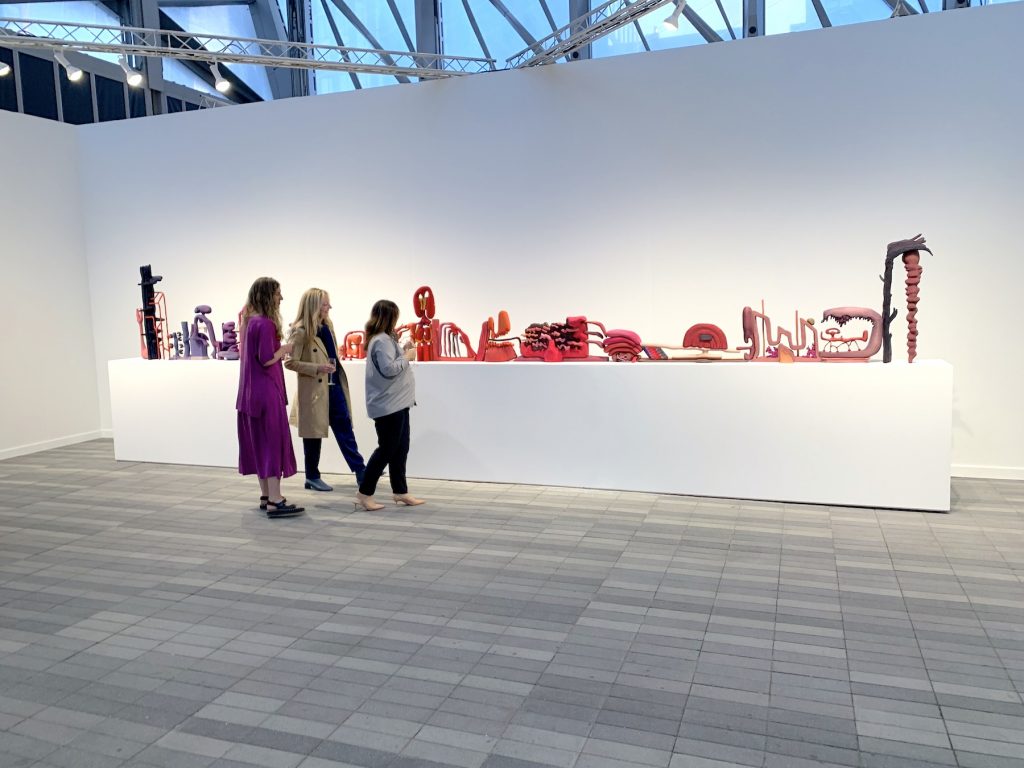
Matthew Ronay, The Crack, the Swell, an Ode (2022) at Casey Kaplan. Photo by Ben Davis.
In sculpture, I think of Izumi Kato’s faux Art Brut fallen idols at Perrotin; Kan Seidel’s riotously unruly ceramic figures; and—among the most fun things here—Matthew Ronay’s long display of odd, creaturely carvings in a one-person booth at Casey Kaplan.
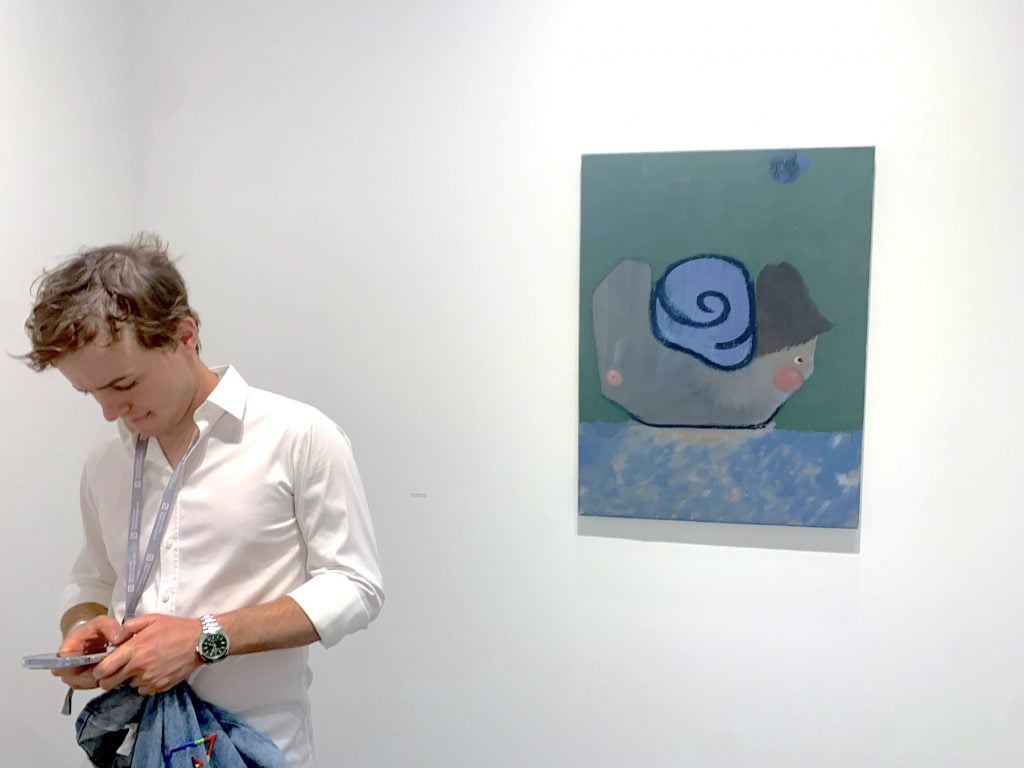
Sanya Kantarovsky, Snail With Hat (2023). Photo by Ben Davis.
Among the 2-D work, I think of works like Sanya Kantarovsky’s lovable snail with a hat on at Modern Art; Dalton Gata’s painting of a magical solid-gold duck; Camille Blatrix’s pleasantly mysterious marquetry at Andrew Kreps.
I might even admit that this sensibility applied to my absolute favorite discovery of the fair: Takako Yamaguchi’s elegant figurative paintings from the ’90s and ’00s at Ortuzar Projects—though Yamaguchi’s crisp blending of the weirder parts of Diego Rivera with hallucinatory riffs on Japanese decorative arts is so sui generis and finely tuned that it is a universe all its own.
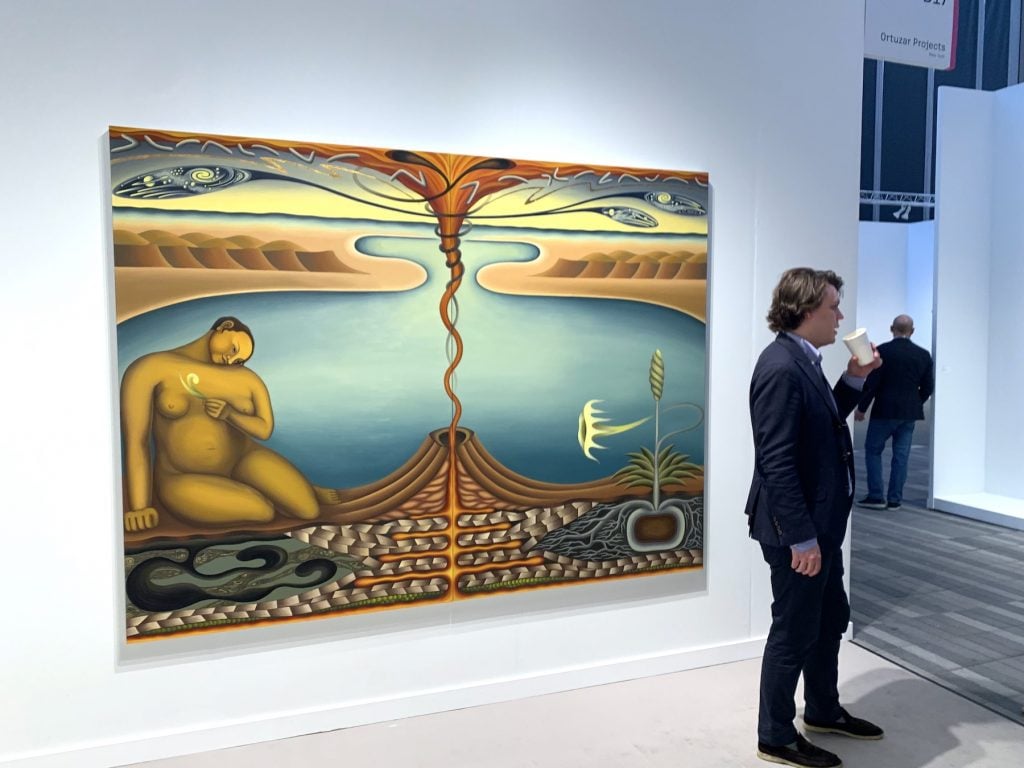
Takako Yamaguchi, Found, Lost and Then Found Again (2004) at Frieze New York. Photo by Ben Davis.
Such were the thoughts about Art Now I could get out of Frieze 2023.
Finally, because the Women of 1973 display at Michael Rosenfeld Gallery was among my favorites at Frieze, I may as well mention in closing the other favorite thing I saw during a week of fairs and shows orbiting the main event at the Shed. That would be “That ‘70s Show,” a group exhibition by an alliance of galleries touting various figures of 1970s New York, located across two floors on Great Jones Street.
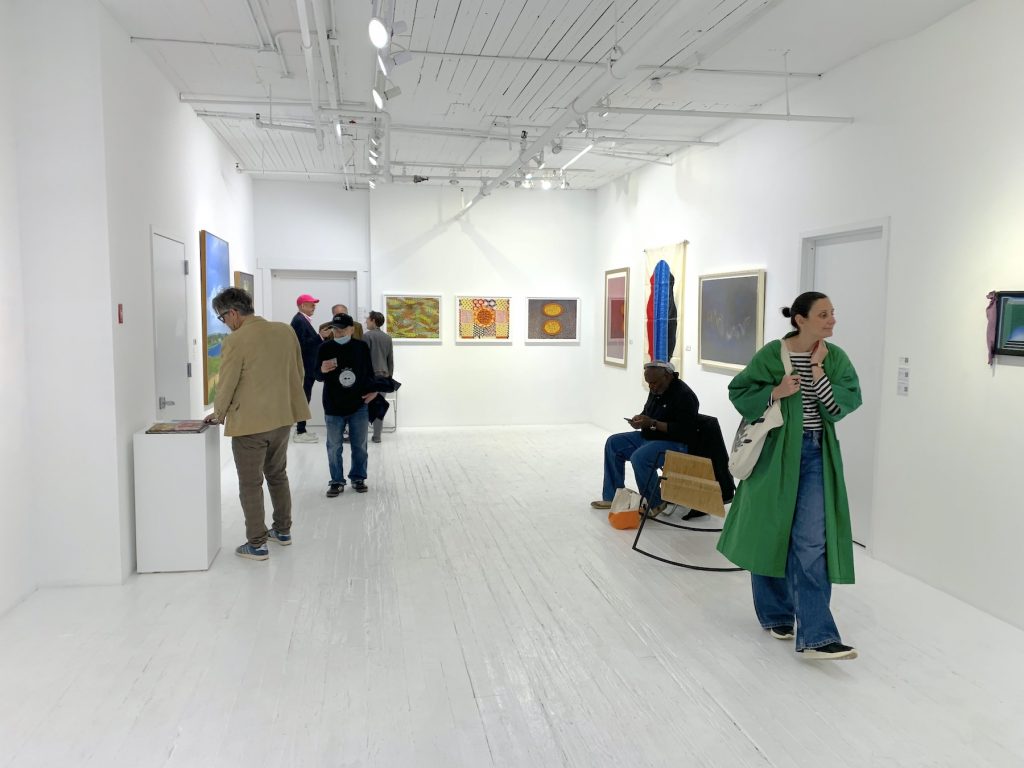
“That ’70s Show” during Frieze Week in New York. Photo by Ben Davis.
It’s not as if this was some wild alternative art experiment. It was still a pragmatic selling event. And it was just as stuffed if not more stuffed as Frieze, each of the 21 participating galleries getting enough wall space to show one or two things: a gripping vortex of a painting by Sylvia Snowden that slowly unlocks its secrets for you, brought by Franklin Parrasch; genially severe stripes by Daniel Buren, from Bortolami; some great Helen Bitar “Geometric Wall Hangings,” from R & Company; Anita Steckel’s vivid black-and-white feminist photo-allegories, from Ortuzar Projects; and many others.
Despite its relatively modest profile, as an art experience I think “That ’70s Show” will stick around in my head longer than Frieze. Maybe there’s just a certain organic fit between the concept, the art on view, and the venue—all are kind of scrappy and off-the-beaten-path and so worth championing.
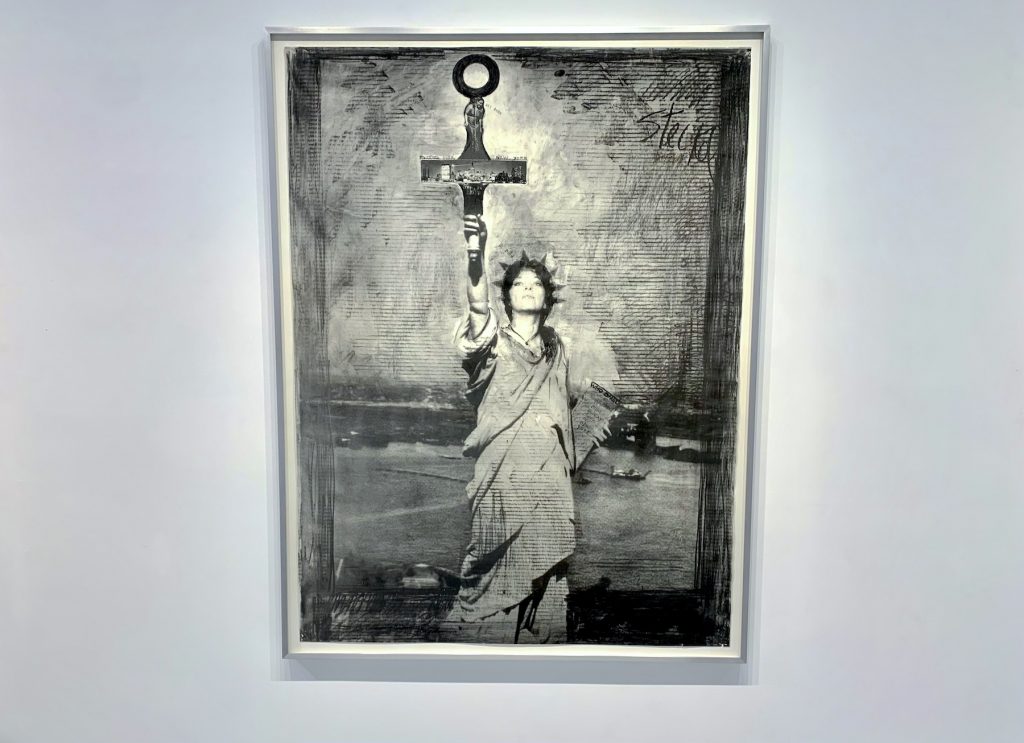
Anita Steckel, Me as the Statue of Liberty (1973). Photo by Ben Davis.
But in terms of overall takeaways, another one from this week of fairs might be the power of having a narrative to hold onto besides the market. In the case of “That ’70s Show,” the extra narrative bump was as simple as a common historical hook.
But that hook, plus some good selections on the part of the dealers, was enough to make a temporary assembly of art feel like it approached being an actual art show, where the different works talk with each other instead of over each other. No small feat.
Below, here are additional photos of works discussed in this piece.
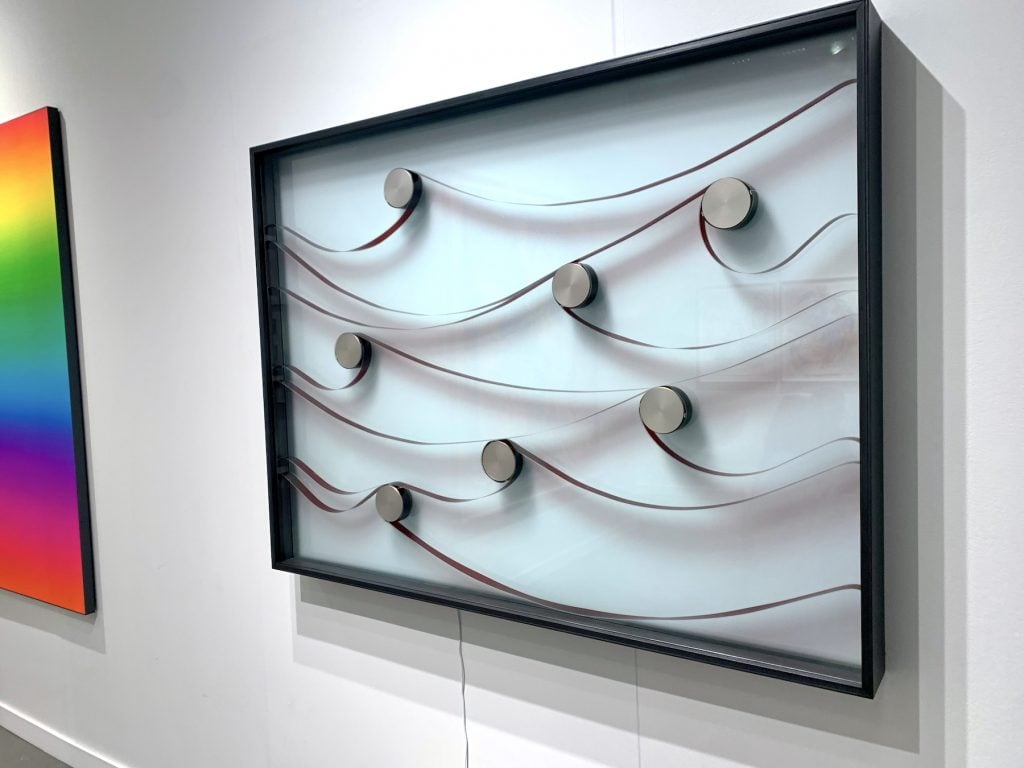
Rosa Barba, Mending Clear Positions (2022). Photo by Ben Davis.
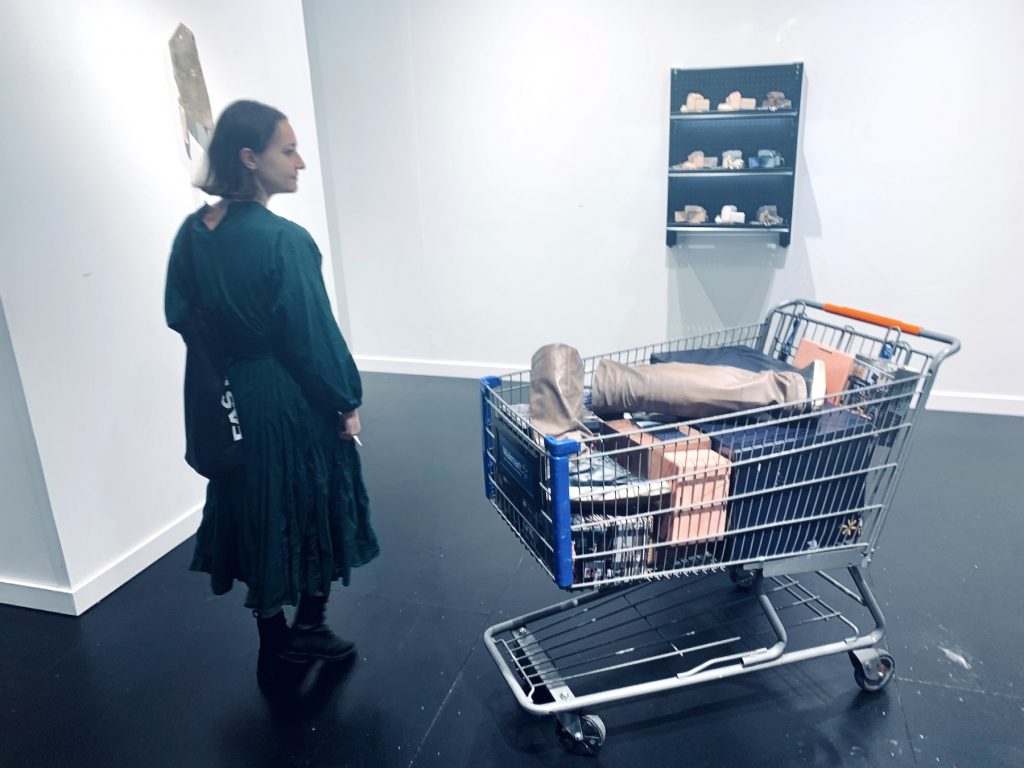
Josh Kline, In Stock (Walmart Worker’s Legs) (2018). Photo by Ben Davis.
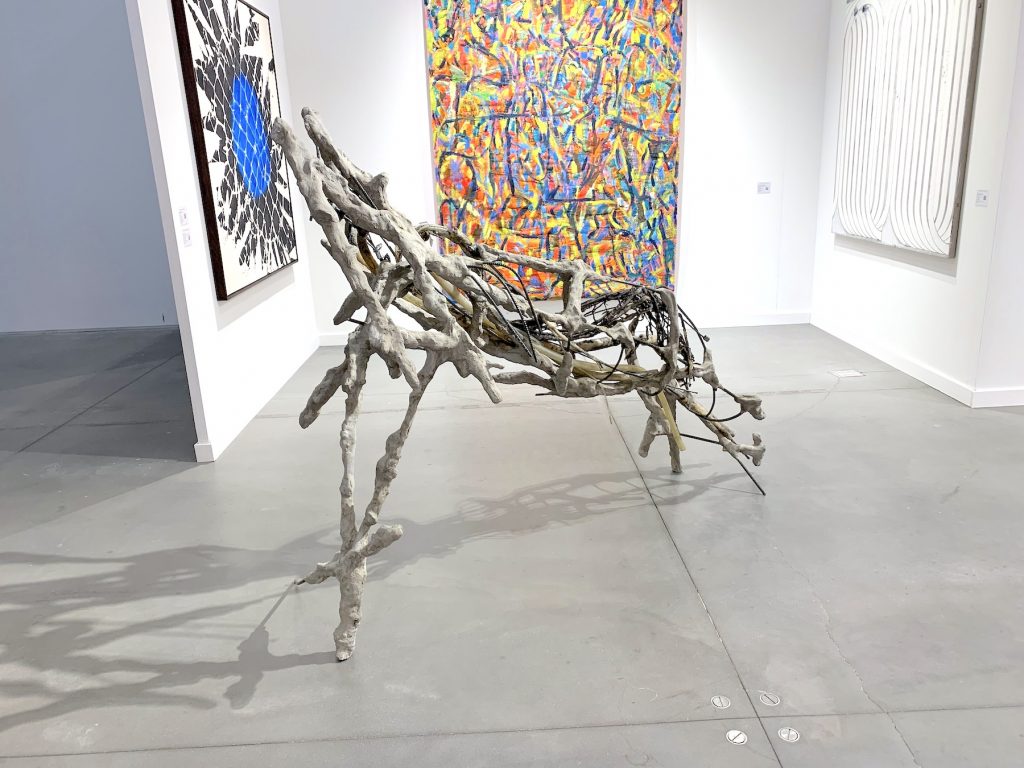
Mire Lee, Look, I’m a fountain of filth raving mad with love; tunnel sculpture I (2022) at Tina Kim during Frieze Art Fair. Photo by Ben Davis.
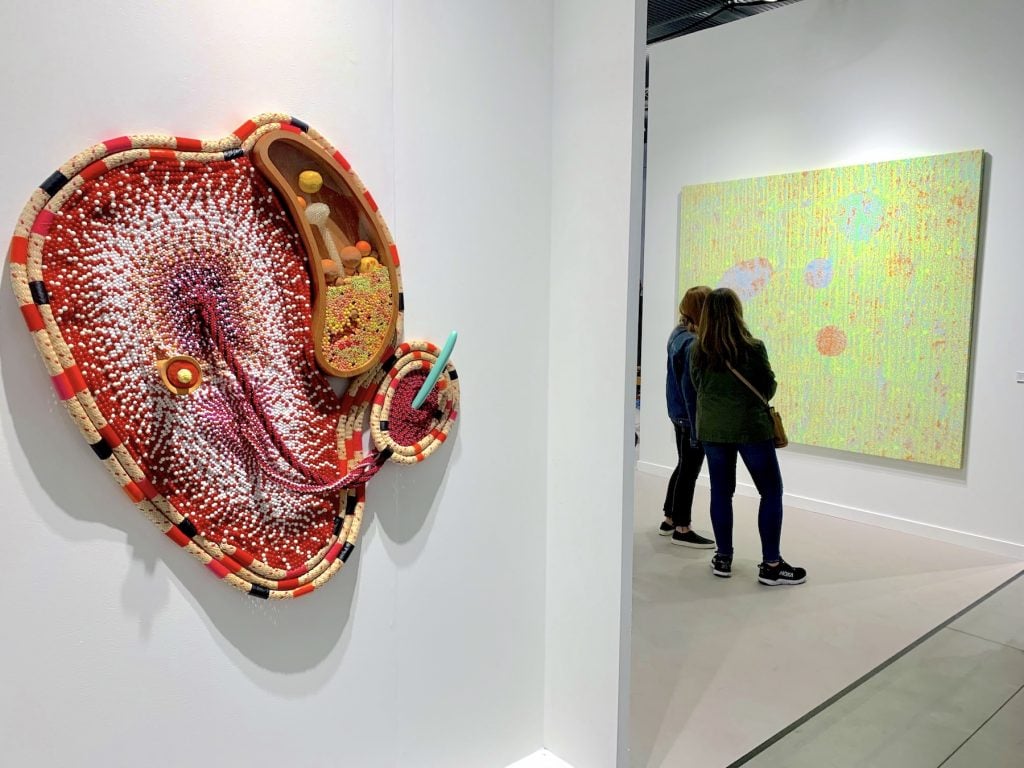
Maria Nepomuceni, Florisbela (2023) and Howardina Pindell, Code #2 (2022) at Victoria Miro during Frieze New York. Photo by Ben Davis.
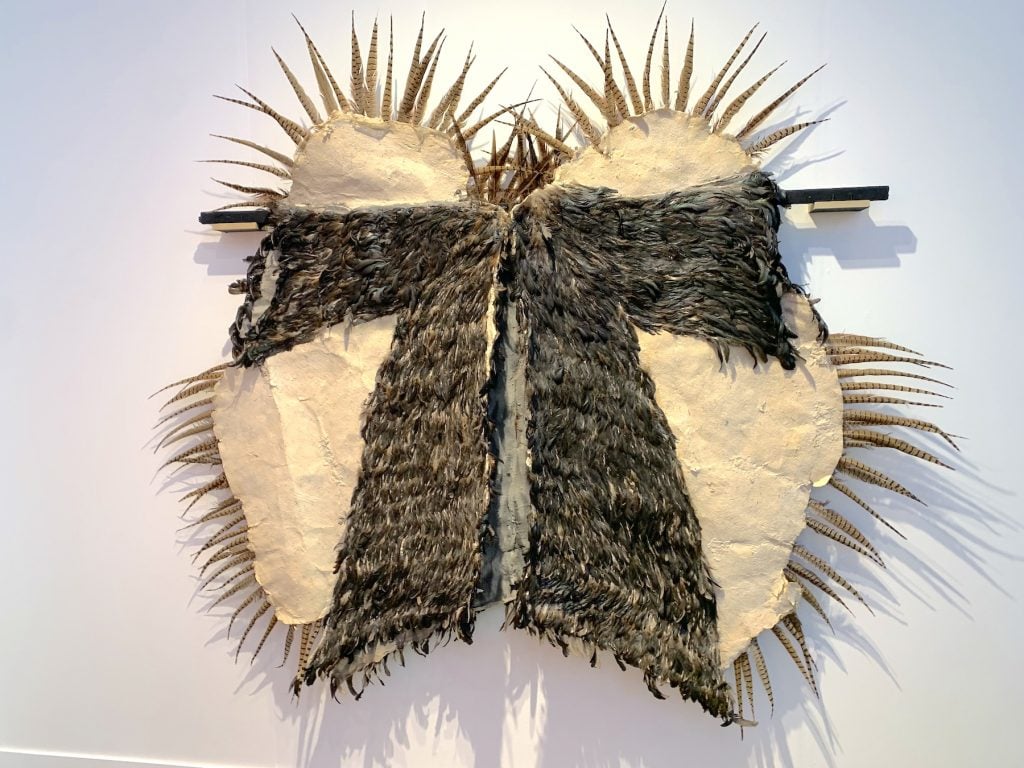
Carlos Villa, Kite God Coat (1979). Photo by Ben Davis.
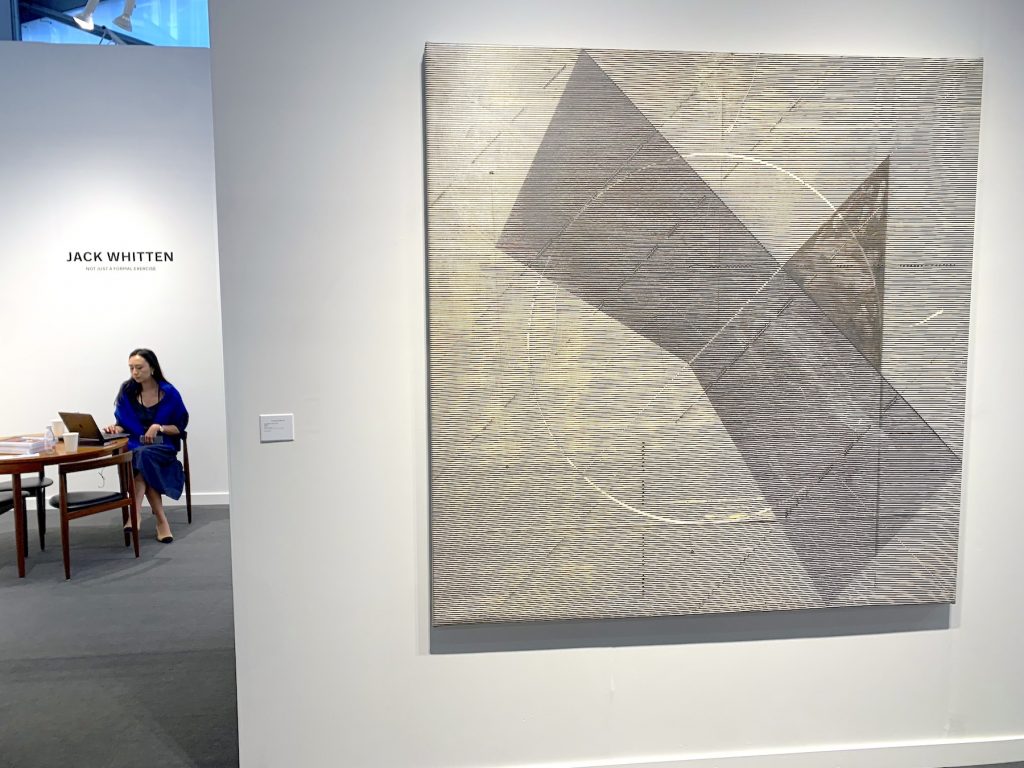
Jack Whitten, Untitled (1976). Photo by Ben Davis.
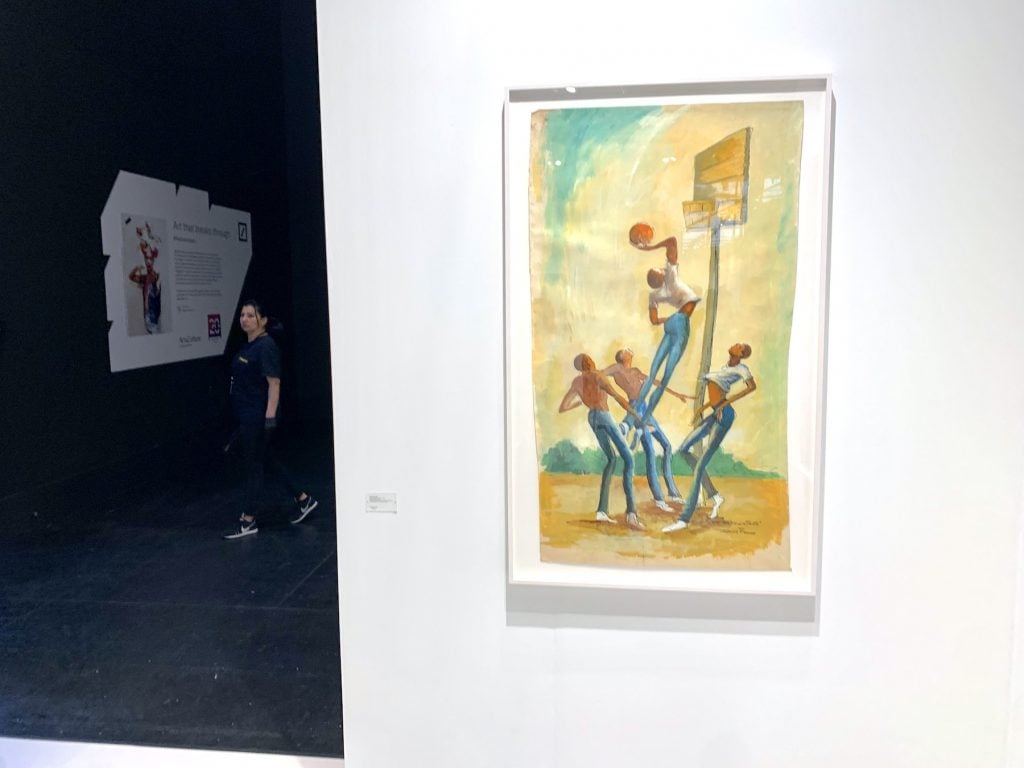
Ernie Barnes, No. 3 Study for Skins + Shirts (ca. 1994). Photo by Ben Davis.
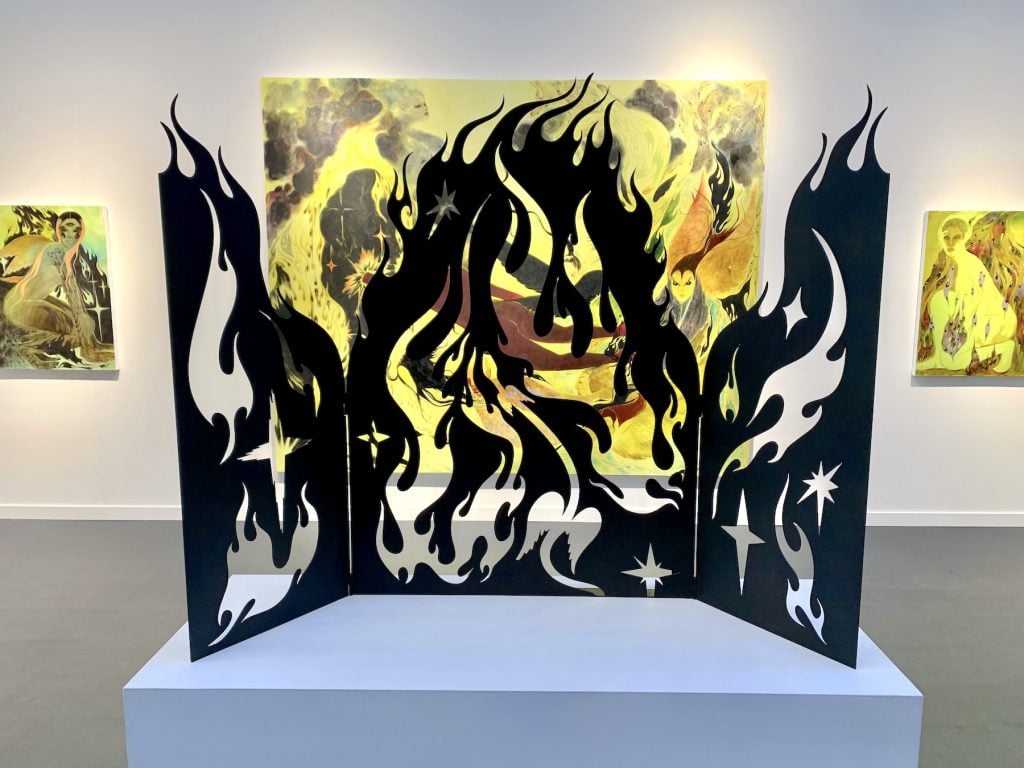
Works by Naudline Pierre at the booth of James Cohan during Frieze New York. Photo by Ben Davis.
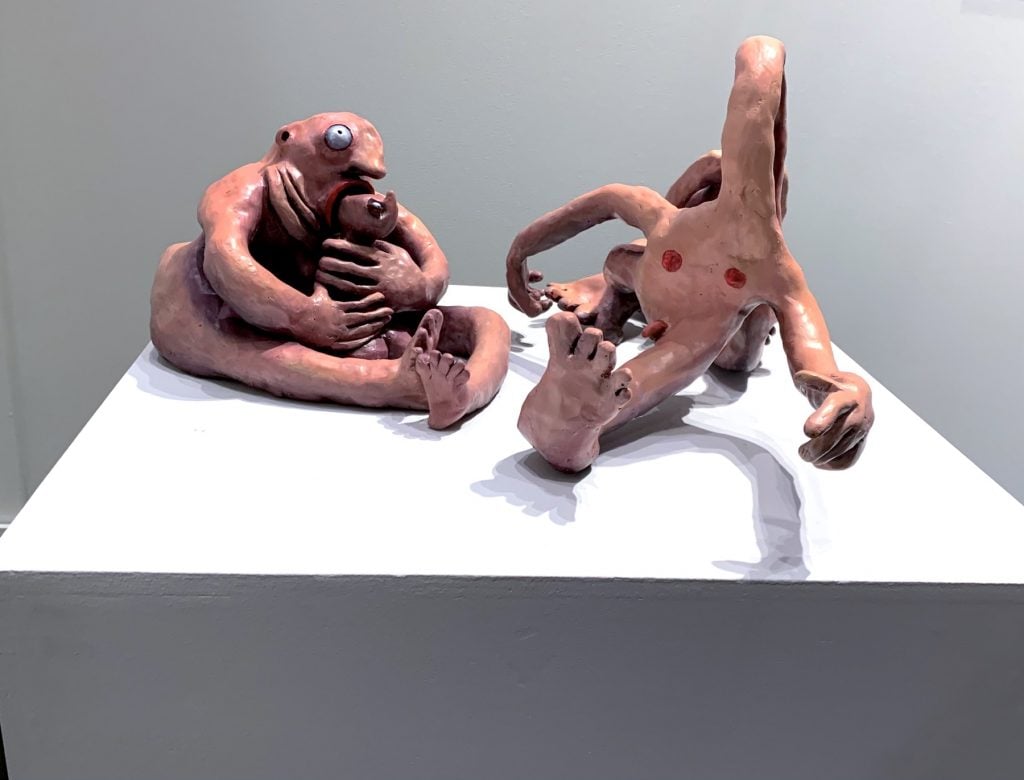
Two works by Kan Seidel at David Lewis during Frieze New York. Photo by Ben Davis.
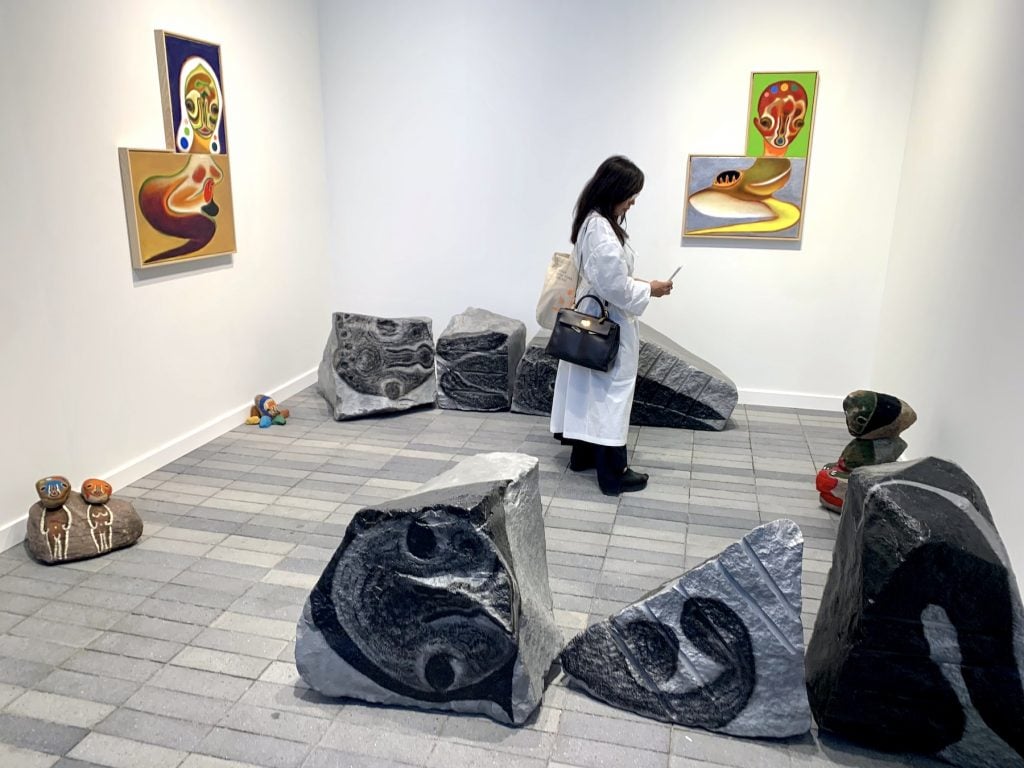
Various work by Izumi Kato at Perrotin during Frieze New York. Photo by Ben Davis.
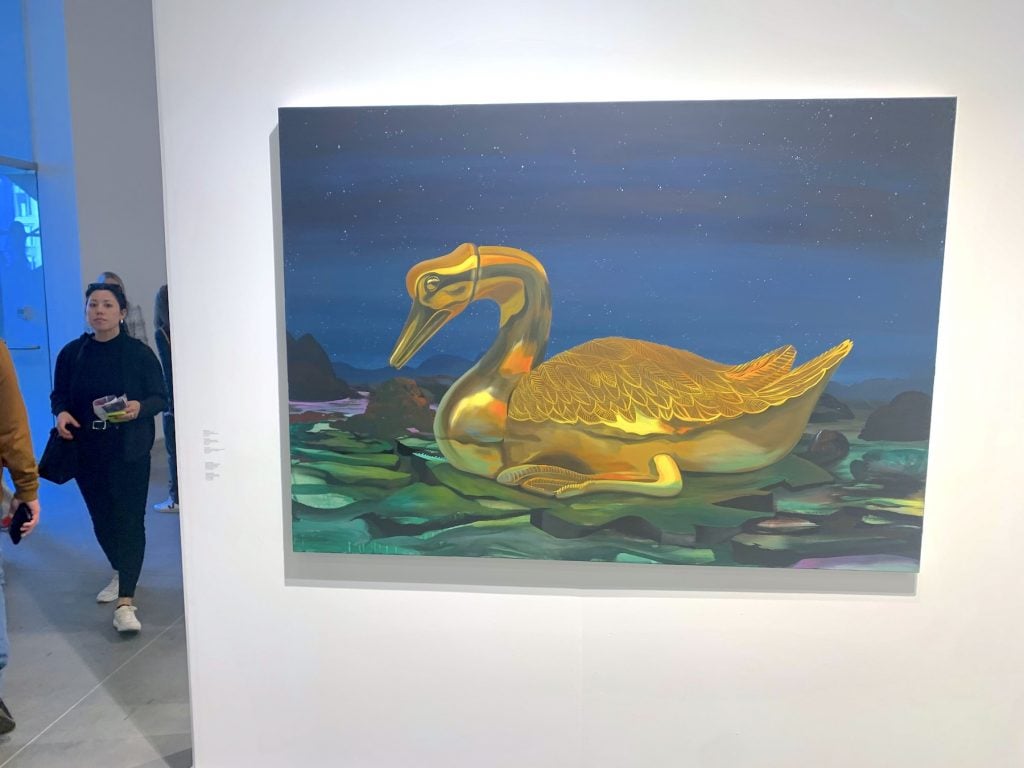
Dalton Gata, Dick head duck (2023). Photo by Ben Davis.
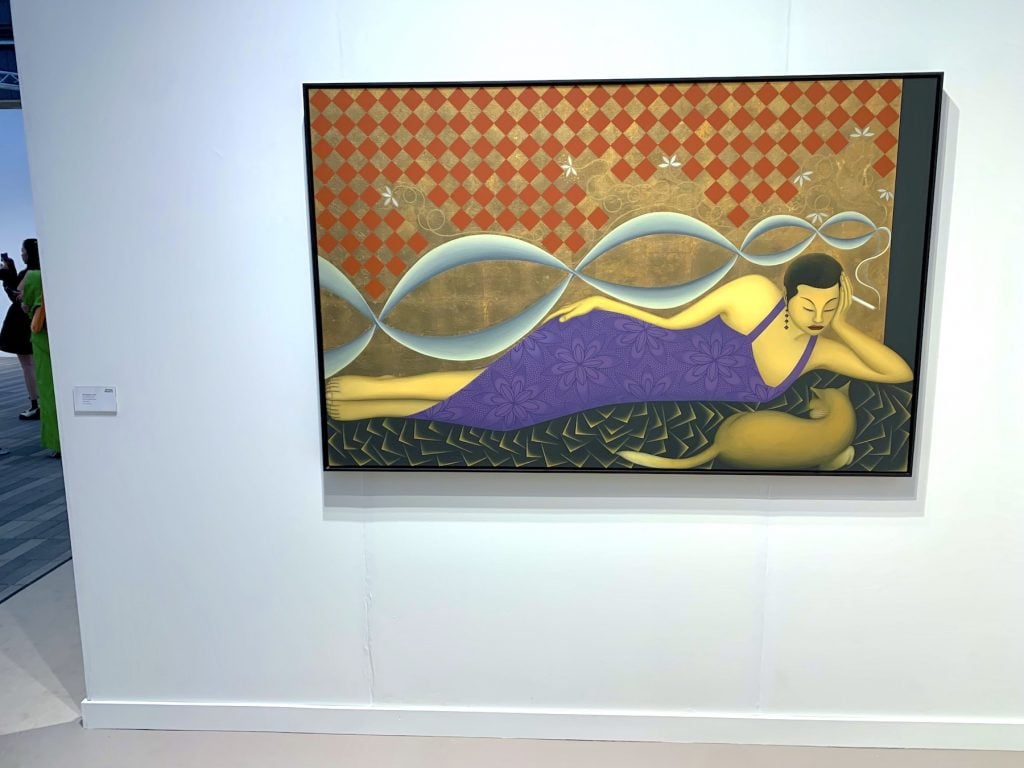
Takako Yamaguchi, Victoria and Whiskey (1995) at Ortuzar Projects during Frieze New York. Photo by Ben Davis.
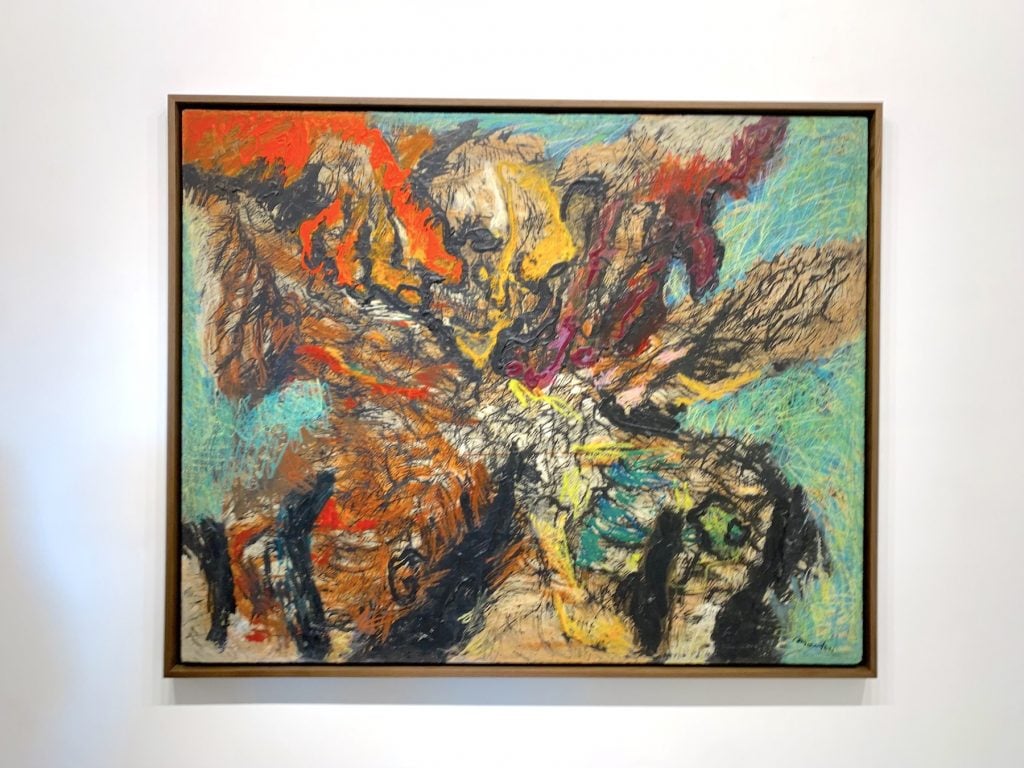
Sylvia Snowden, M Street – Rosetta Williams (ca 1978) at Franklin Parrasch during “That ’70s Show.” Photo by Ben Davis.
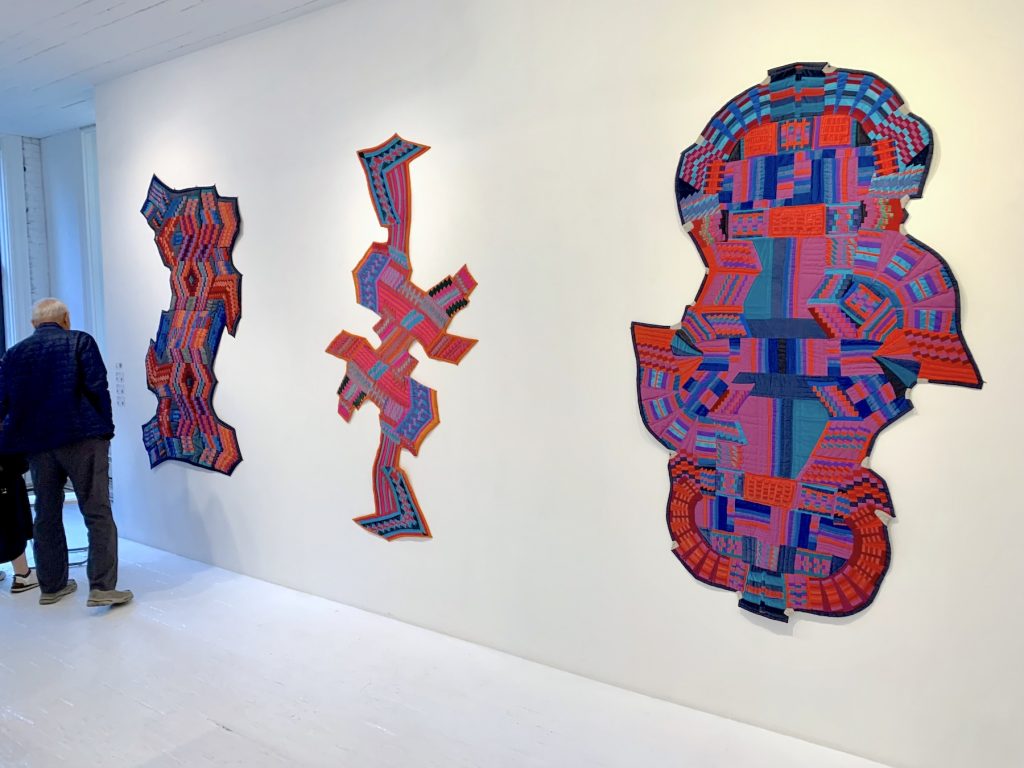
Helen Bitar’s “Geometric Wall Hangings” at “The ’70s Show.” Photo by Ben Davis.